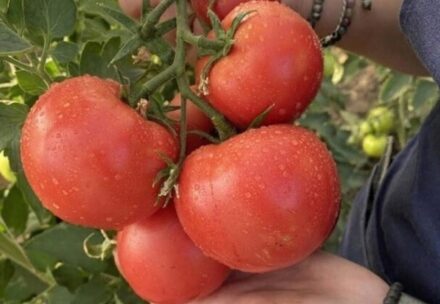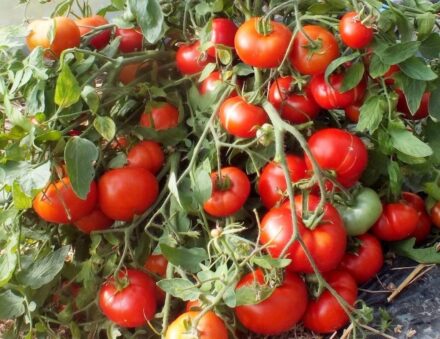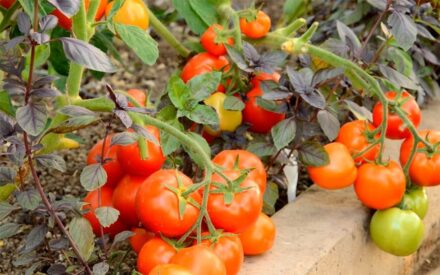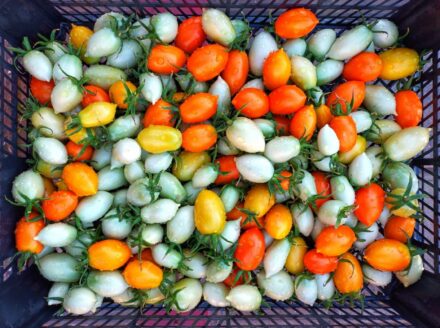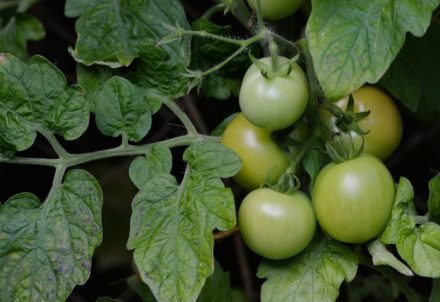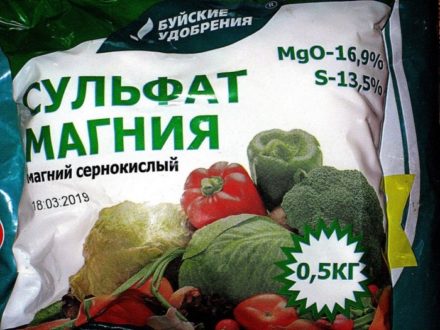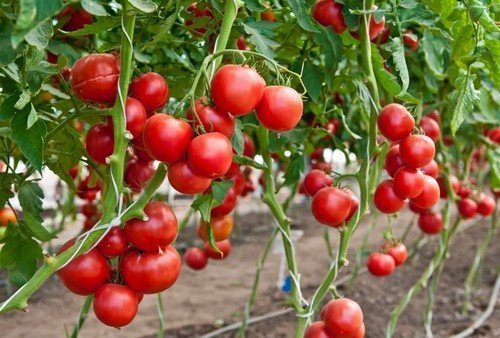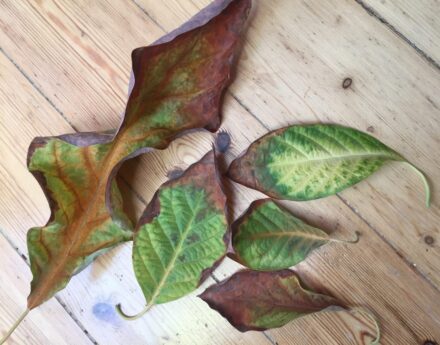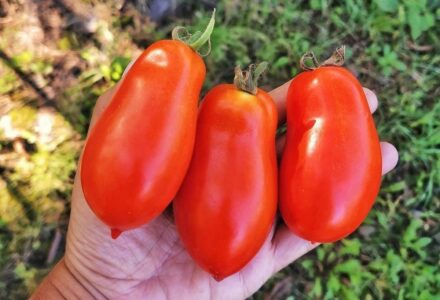The “Bull's Heart” tomato has gained particular popularity among amateur gardeners. The variety is distinguished by large, fleshy fruits with a beautiful heart-shaped shape. Excellent taste qualities, universal use in cooking and preservation have made “Bull's Heart” one of the sought-after varieties.
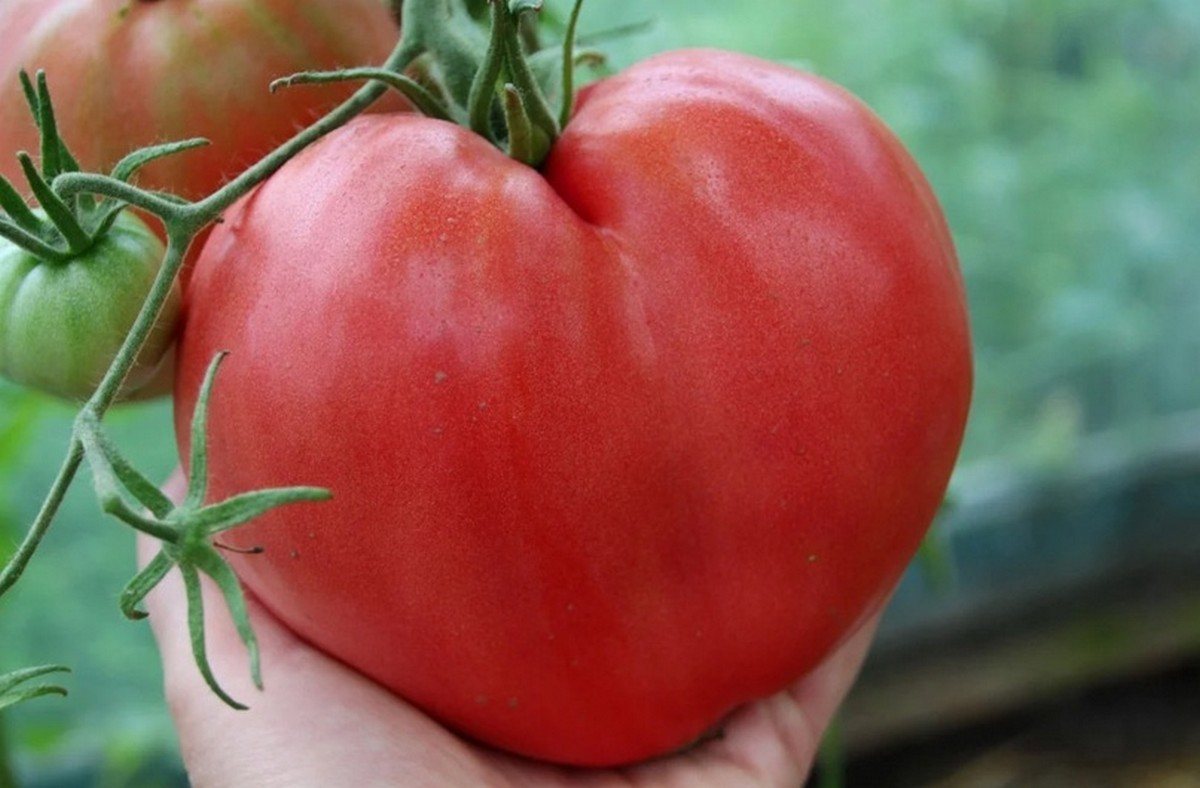
- History of selection
- Description and characteristics
- Photo
- Productivity
- Resistance to pests and diseases
- Methods of application
- Agricultural technology
- How to plant
- Growing
- Harvesting
- Advantages and disadvantages
- Reviews
History of selection
At the beginning of the 21st century, a new tomato variety, “Bull’s Heart,” was grown by breeders and registered in the State Register of the Russian Federation. The intended purpose of the variety was its fresh use. Vegetable growers recommend that southern regions grow tomatoes in open ground. For the middle zone and regions with similar climatic conditions, greenhouse conditions for growing tomatoes are suitable.
Description and characteristics
The “Bull's Heart” tomato is considered a mid-late variety - it takes 4 months from the first sprout to the ripe fruit. Spreading bushes reach a height of up to 2 meters when grown in a greenhouse. In open ground, the height of a tomato does not exceed one and a half meters. The powerful stem has strong, pubescent shoots with green leaves. The first brush is formed after 8-9 leaves. At least 5 fruits are created on each brush.
The plant needs pinching and bush formation to normalize the fruits. Due to the developed root system, tomato produces good yield. From the lower clusters, tomatoes reach a weight of up to 1 kg, on the upper ones - much smaller, up to 250 g. Tomatoes are stored in cool places for 2-3 weeks.
Tomatoes vary in size and appearance. The thin peel is easily separated from the pulp. Inside, the tomato is dense, low-water, without veins. Small seed chambers are located along the edges of the fruit. The pulp of the fruit with a high sugar content gives the tomato a pleasant sweetness. The sophistication of the taste is complemented by a slight sourness.
| Ripening time | 120-130 days, mid-season |
| Color/Color | Rich red |
| Plant height | 150-180 cm, tall |
| Fruit size | large |
| Fruit weight | 100-500 g |
| Type of fruit | heart-shaped |
| Number of fruits per cluster | up to 5 |
| Landing location | open/closed ground |
| Planting scheme | 70×30 cm |
| Category | variety |
| Bush type | determinant |
| Conditions | for sunny places, for partial shade |
| Year of approval for use | 2003 |
| Authors | LLC "Agrofirma Poisk" |
Photo
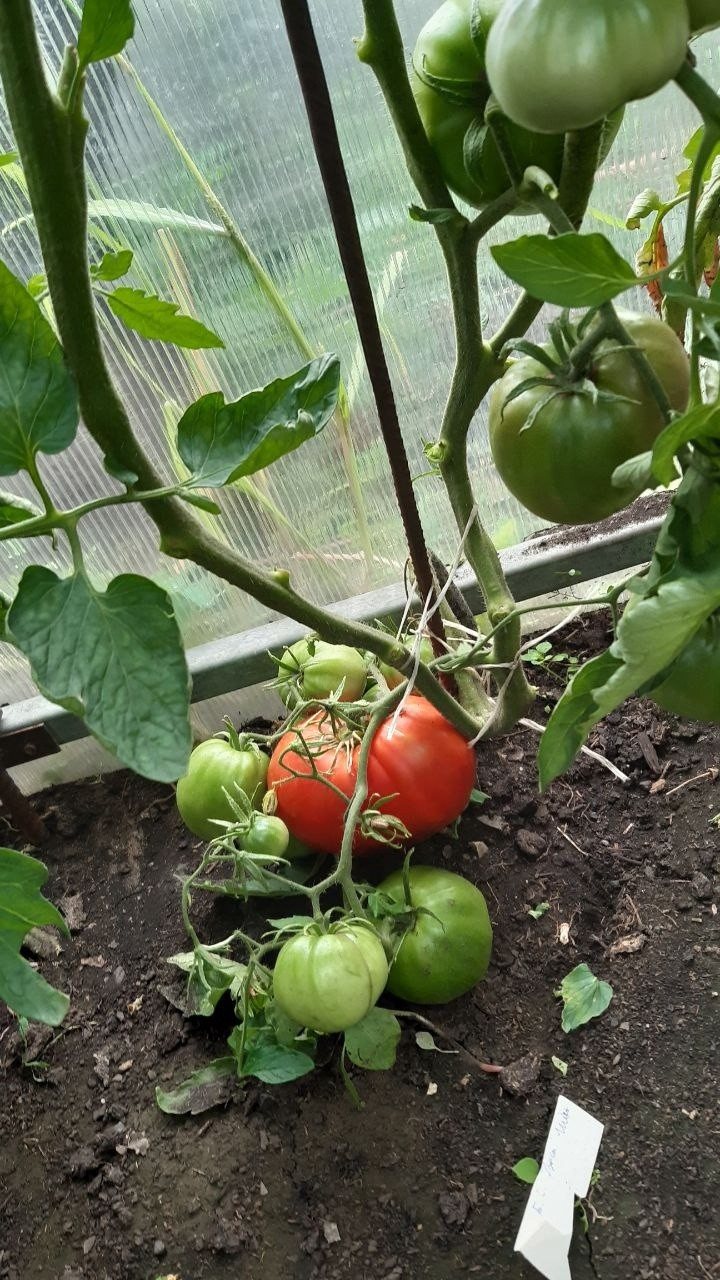
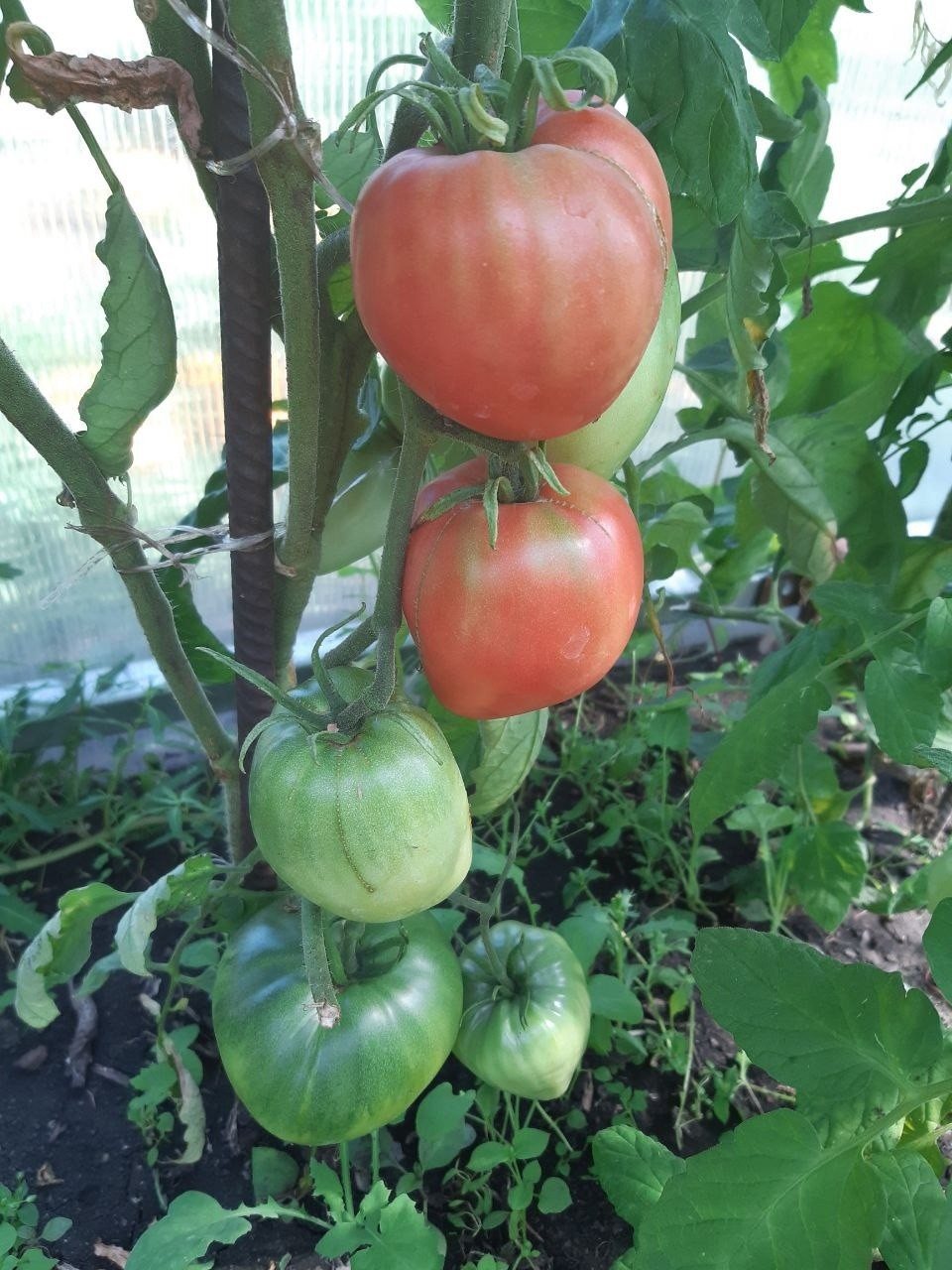
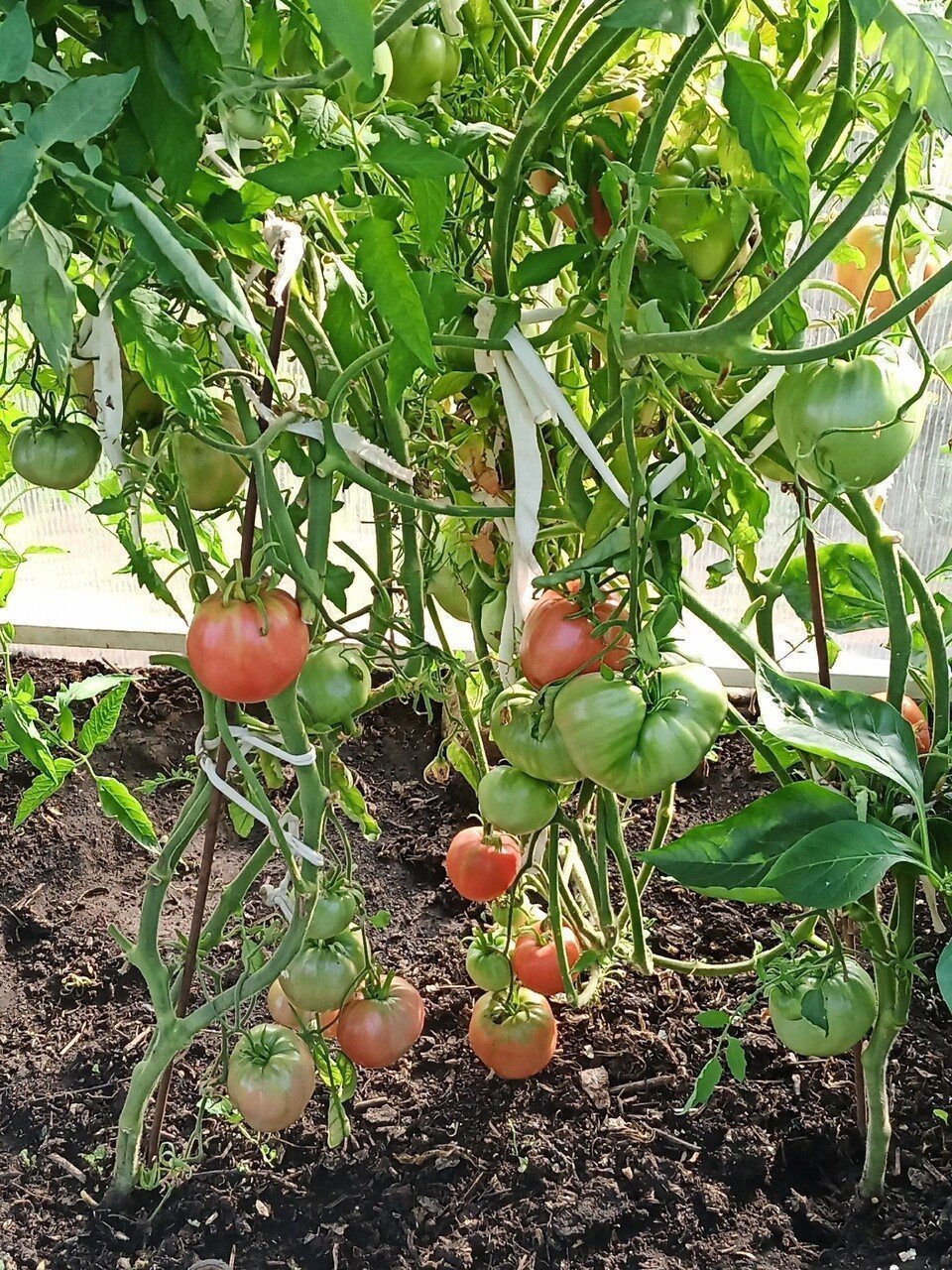

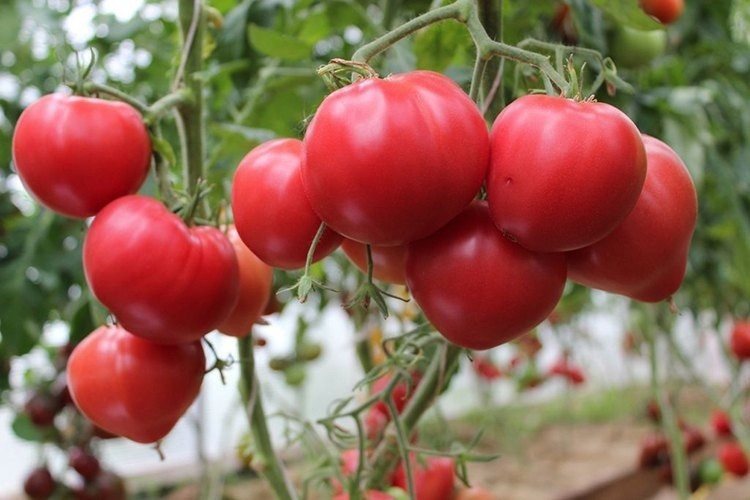
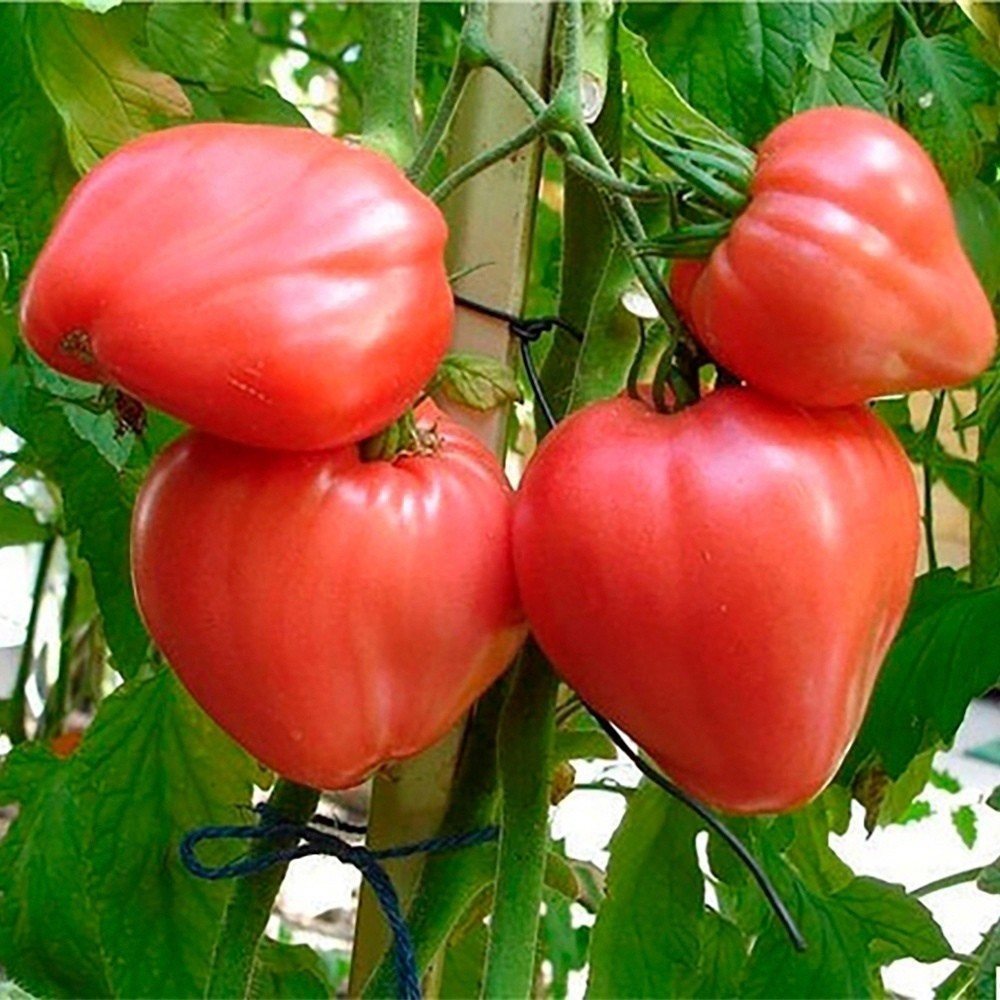
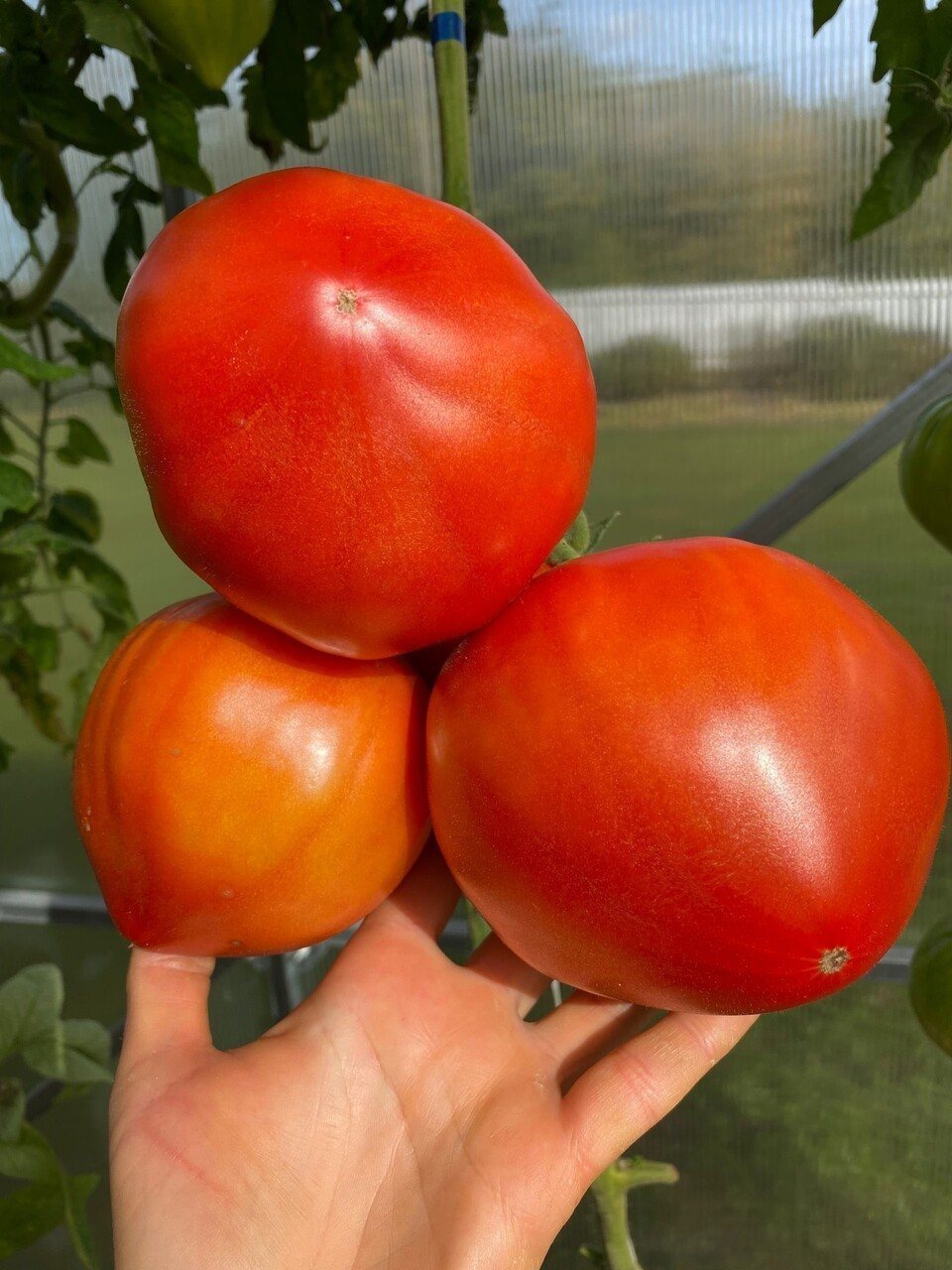
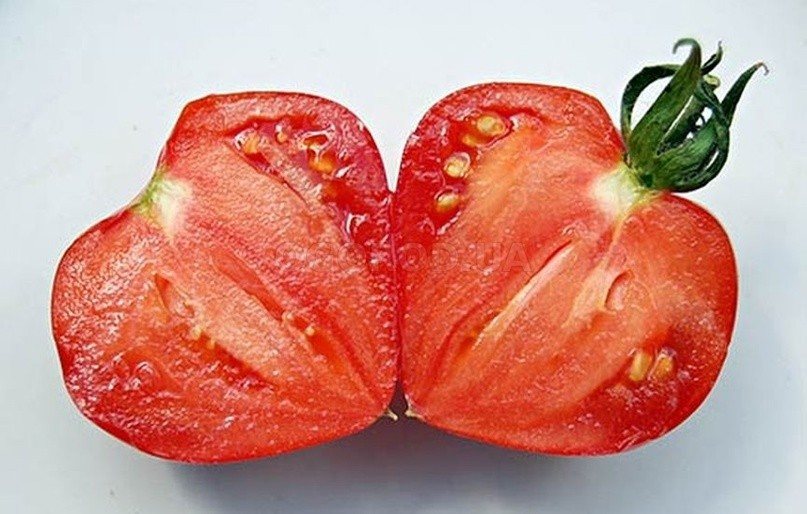
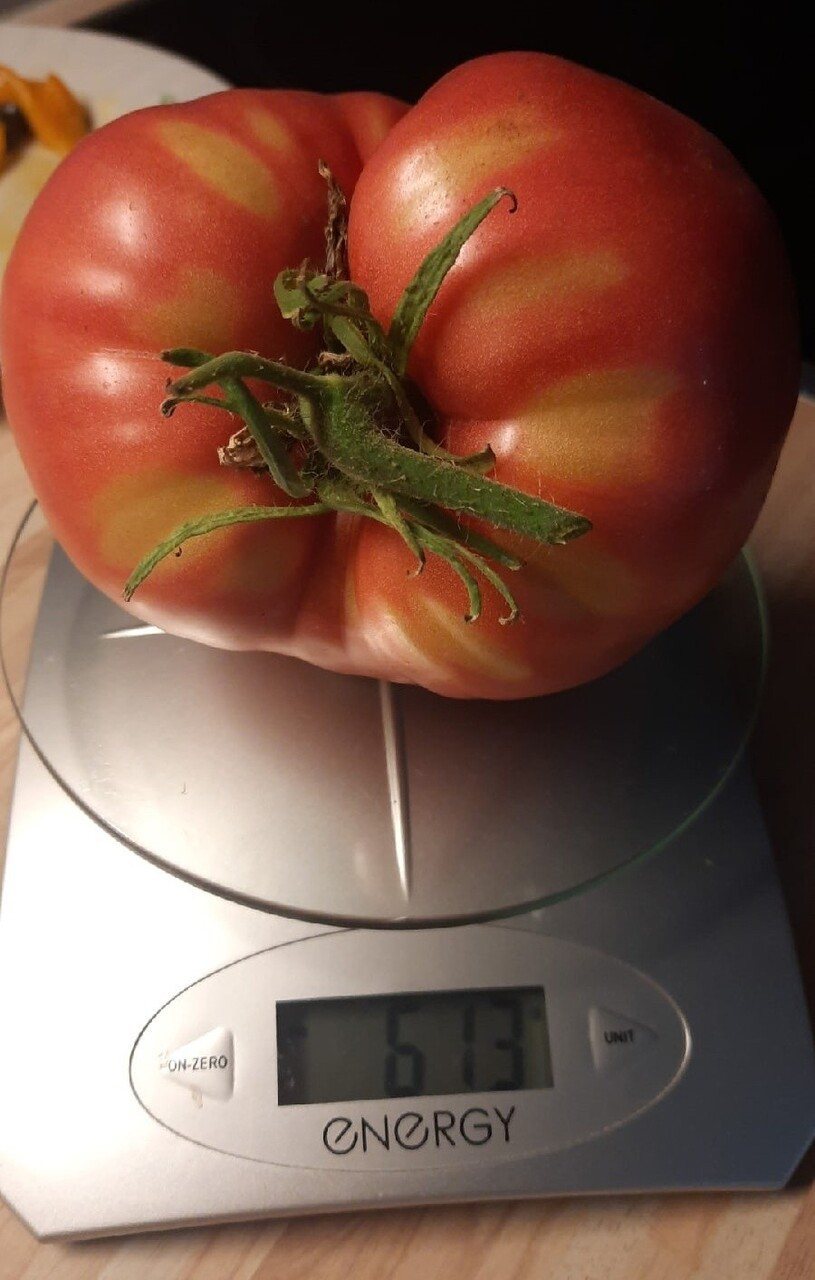









Productivity
When grown in open ground, the average yield is from 3 to 5 kg per bush. Cultivation in a greenhouse increases yield by 2 times. However, we should not forget that such indicators can be achieved only if agrotechnical work, watering and fertilizing are carried out in a timely manner.
To obtain fruits weighing more than half a kilo, it is necessary to form a plant into 1 trunk. The yield per bush will remain the same, but the number of fruits will decrease and the size will increase.
Resistance to pests and diseases
This variety is moderately resistant to diseases.More susceptible to late blight. Symptoms of the disease include the appearance of brown-gray spots on the leaves. This disease is so serious that it can destroy more than half of the crop.
The appearance of late blight is associated with stagnant moisture. Prevention consists of regular ventilation of the greenhouse. It is advisable to water in the morning to avoid the appearance of cool moisture on the walls of the greenhouse. This variety does not like thickening. As soon as signs of the disease appear, it is necessary to destroy the damaged leaves and spray the tomatoes with a fungicide.
With macrosporiosis, brown spots appear on the plant, the leaves and trunk are affected. On tomatoes, the affected areas are removed, treated with a solution of copper sulfate and laundry soap in a ratio of 1:10.
The mole cricket and wireworm affect the roots, preventing the growth and development of the tomato. Before planting, sawdust soaked in a chemical composition is buried in the hole. To get rid of the wireworm, potatoes or carrots are buried in the soil, after a while the root crops are taken out and destroyed. Leaves and fruits suffer from whitefly larvae and night moths. Spraying the plant with garlic infusion helps. Chemical insecticides are used at the beginning of the growing season.
Methods of application
Despite their large size, the "Bull's Heart" tomatoes are great for canning. They make nutritious and rich lecho, borscht dressings, ketchups, adjika. This variety is not used for making tomato juice due to its low juiciness.
The sweetish taste of the "Bull's Heart" tomato is widely used fresh.Dishes are prepared with it: salads, cold and hot appetizers, borscht. Use frozen.
Agricultural technology
With proper agricultural technology, the yield of the variety increases.
How to plant
This variety is considered whimsical, so for planting it is necessary to carefully select the place and soil:
- Shaded areas are not suitable;
- it is unacceptable to plant in wetlands;
- do not plant in places where nightshades grew;
- prepare the soil in the fall by adding manure or compost, neutralize with ash and shells;
- Loamy soils are suitable.
In spring, planting should be done in non-sunny weather so that the soil is warmed up. No more than 2 bushes are planted per meter so that there is enough nutrition during growth. Immediately after planting, supports are placed for tying up the plants.
Growing
The "Bull's Heart" variety has a long growing season, so the growing process begins with planting seedlings. To plant tomatoes in a permanent place in April, you need to sow the seeds in February. A week before planting, the seedlings are hardened off by taking them out into the fresh air.
In mid-April, tomatoes are planted in a heated, illuminated greenhouse. If by this time the ground has not warmed up enough and the greenhouse is not heated, then planting should be postponed until the end of April.
Watering the plants in the greenhouse is carried out once a week, and a bucket of pre-heated water is used per square meter. On hot days, watering is carried out more often. A month before harvesting, watering is stopped so that the fruits are not too watery.
Ventilation and pollination are important for tomatoes, so the greenhouse doors should be kept open from morning to evening. In cloudy weather, you can open at least one window.
For planting in open ground, beds are prepared in the fall. After planting, mulch with sawdust or straw. Watering is carried out 2 times a week, in hot weather 3-4 times. Drip irrigation is used to prevent the soil from eroding.
This variety of tomatoes responds to mineral and organic fertilizers. They are applied once every 2 weeks from the moment the plant is planted. Complex fertilizers are also added, alternating with organic ones: herbal infusion, yeast, mullein. When the ovaries are formed, the bushes are treated with boric acid.
To form 1-2 trunks, remove excess shoots. If pinning is untimely, the large fruit size of the “Bull’s Heart” suffers. To prevent the fruits from falling to the ground, you need to carefully tie the plant to trellises or stakes.
Harvesting
Harvesting is carried out when the technical stage of ripening (greenish tomatoes) and biological (red tomatoes) begins. In the first case, it is not clear whether the tomatoes will still grow or not. Therefore, if there is no need to collect unripe tomatoes, then it is better to wait. If the bush is damaged by late blight, the tomatoes are picked green for ripening.
To ripen, place the tomatoes on a windowsill or in a dry, dark place, laying them out in 1-2 layers.
Advantages and disadvantages
Pros:
- large in size, beautiful in shape;
- high-yielding;
- good resistance to fungus.
Minuses:
- low-juicy pulp;
- immunity to late blight is poorly developed;
- needs high-quality agricultural technology.
Another benefit is collecting seeds for planting.
Reviews
Amateur gardeners positively evaluate the cultivation of the “Bull’s Heart” variety. That's what they say.
I have been planting "Bull's Heart" tomatoes in a greenhouse for several years now. I plant them in early May, and in August I enjoy the fragrant, tasty fruits. After planting, I form the bushes into one trunk and tie them to pegs. I monitor watering and ventilation. For tomatoes, this is a weak point. The result brings a lot of joy. The fruits grow large, 400-500 g.


